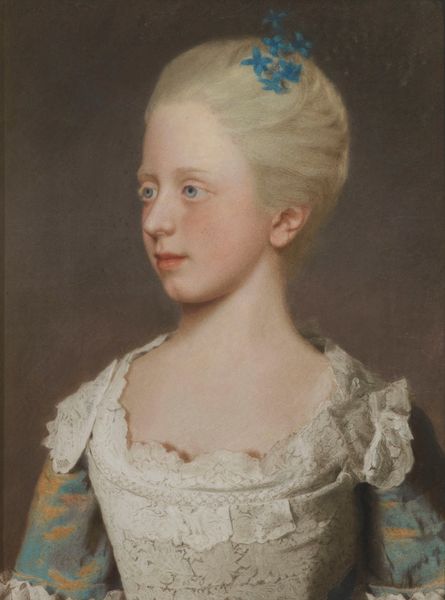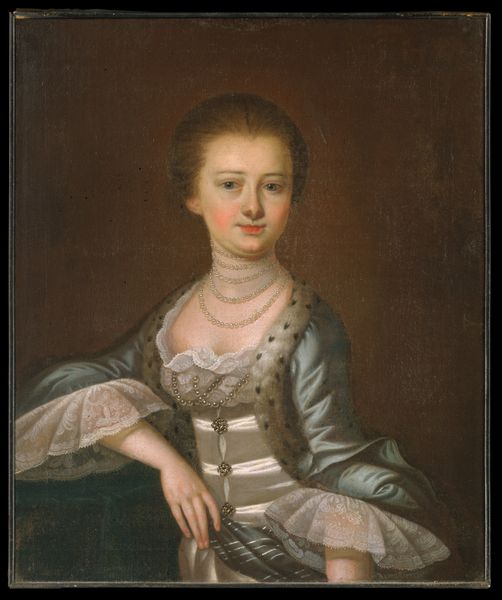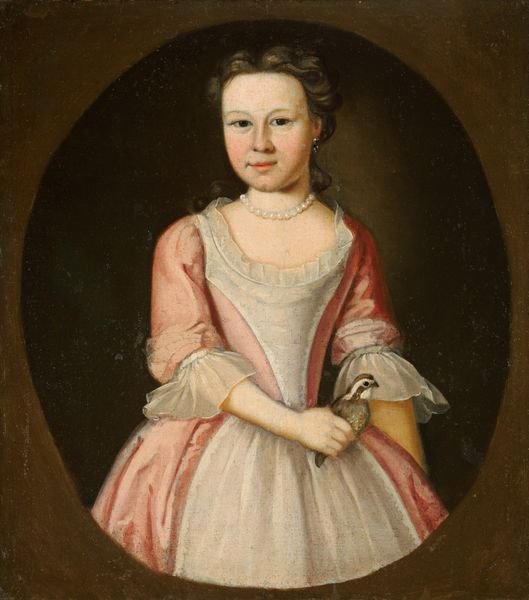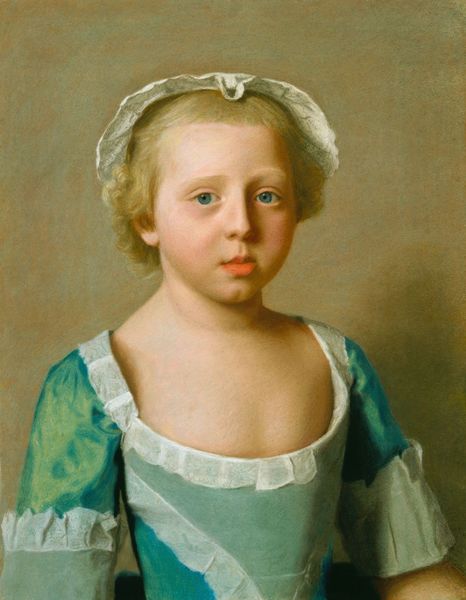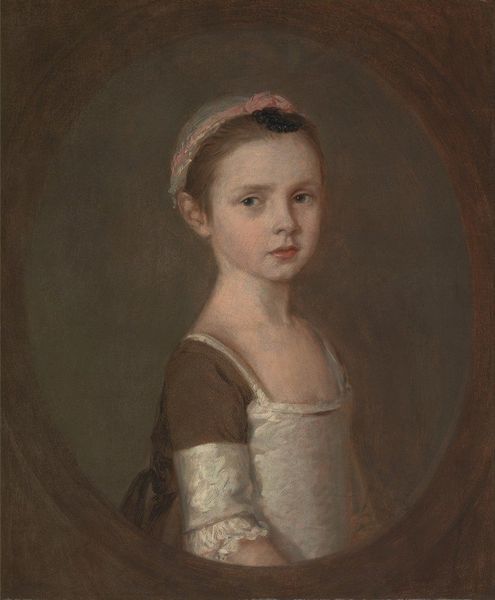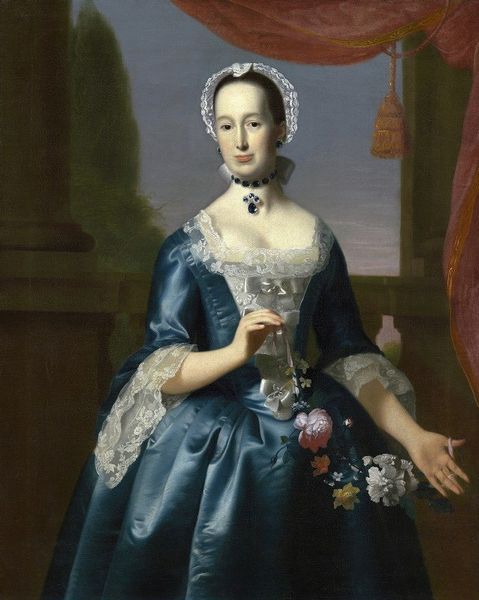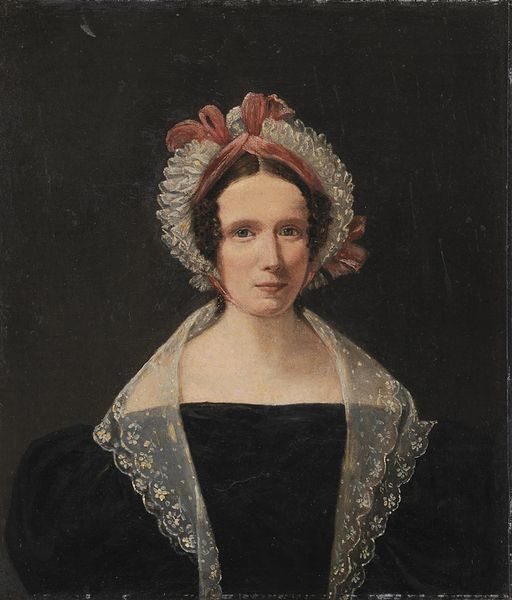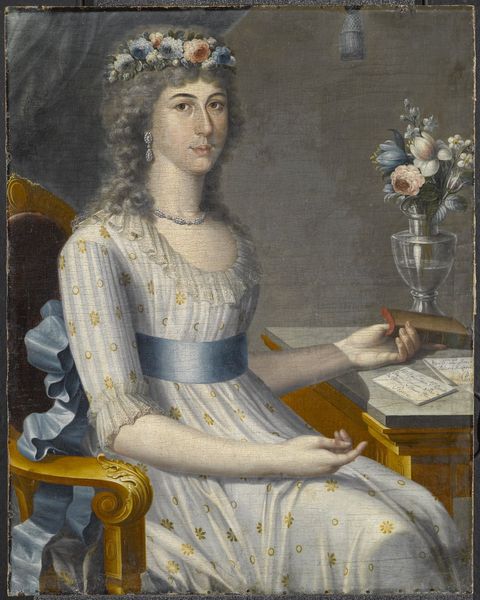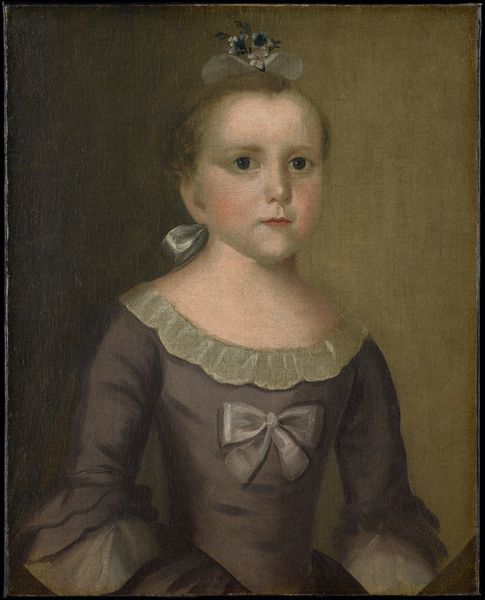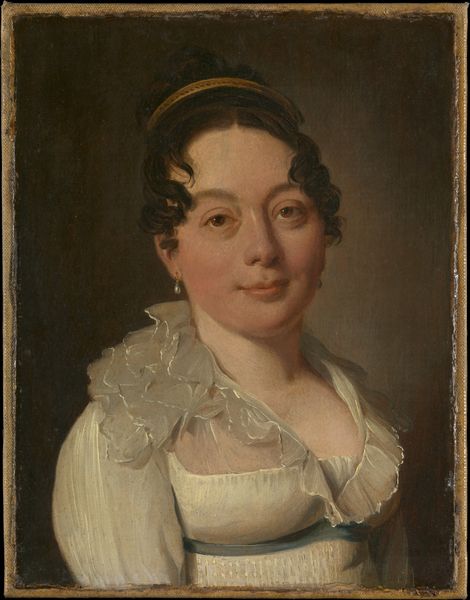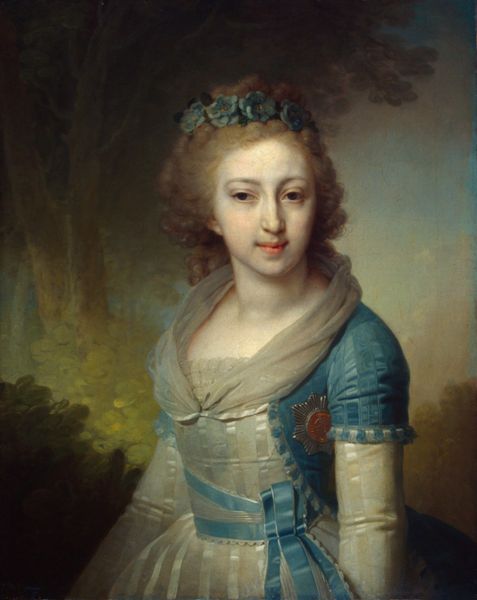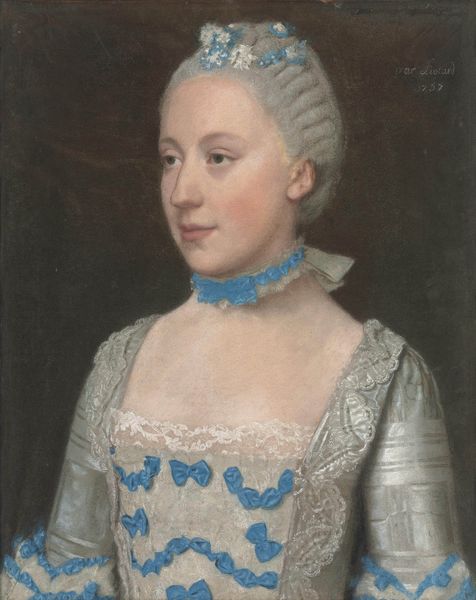
painting
#
portrait
#
woman
#
painting
#
academic-art
#
rococo
Dimensions: 30 x 25 in. (76.2 x 63.5 cm)
Copyright: Public Domain
Curator: Lawrence Kilburn, or Kilbrunn, depending on which record you consult, painted this "Portrait of a Lady" in 1764. It resides here at the Metropolitan Museum of Art. Editor: It feels like stepping into a powdered wig time machine, doesn't it? Those pastel hues and the demure gaze… yet, there’s a disquieting formality. Makes you wonder what was she thinking? Curator: Absolutely. Note the fabrics—the satin dress, the delicate lace, even the small wrist adornment, probably crafted by specialized artisans. Each element indicates access, wealth, and specific social standing. Her class is legible through the visible labor embodied in these objects. Editor: It's a doll's house portrait, really. She's posed with those perfect little roses. I find myself drawn to that slight frown—a hint of a rebellious spirit lurking beneath all that propriety? It feels more 'alive' than the flowers. Curator: The contrast is apt. We should consider the politics of Rococo portraiture in the context of the burgeoning Enlightenment. Artists often walked a line: showcasing luxury, but also hinting at emerging ideologies. It's also worth considering this artist's trajectory through the historical record and what limitations that history would place on access to materials and commissions. Editor: Yes! Perhaps these rosy details are carefully chosen indicators that help a lady subtly stake her place within the restrictive frame she inherited? Kilburn captured more than just fabric and form. She feels ready to take up needlework and poetry one moment and incite a quiet revolution in the next. It might be how much the flowers give an organic and ephemeral impression in stark contrast to her static position and steely face. Curator: A plausible interpretation. But by emphasizing the constraints and the calculated display of affluence and aspiration, we can expose how such portraits became integral in structuring a certain form of social order and power dynamic during the period. It tells us so much about the mechanisms through which an artwork reflects its societal making. Editor: Fair enough. Though sometimes I think it's the unseen stories whispering beneath the veneer that are more resonant to me, perhaps? Those imagined rebellious inclinations dancing on the tip of her 18th-century tongue. It's where humanity breaches into artistry. Curator: Well, on that evocative note, shall we proceed to the next painting? Editor: Lead the way!
Comments
No comments
Be the first to comment and join the conversation on the ultimate creative platform.
